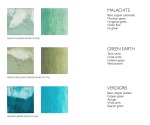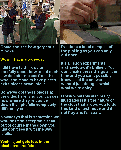This paper was originally presented in absentia at the 2018 meeting of the Medieval Academy of America plenary session titled “Building Inclusivity and Diversity: Challenges, Solutions, and Responses in Medieval Studies,” organized and chaired by Nahir I. Otaño-Gracia.
***
Decolonizing Popular Medievalism: The Case of Game of Thrones

While not universally accepted, it is not uncommon for those of us in medieval studies to point to popular medievalism as our introduction to the field, whether via J.R.R. Tolkien, historical novels, video games, or the biggest phenomenon on television right now, Game of Thrones. And, as many scholars have discussed in detail, popular medievalism bears little resemblance to the actual medieval period, which makes any movement to decolonize the field even more challenging.
This paper offers a specific test case for how one might begin to decolonize popular medievalism from within, a process that has already begun and that I have watched with great interest over the past year. On July 30, 2017, the Twitter hashtag for Game of Thrones was overtaken by a protest (#NoConfederate) against the creators’ new proposed series for HBO that imagined an alternate universe where the Confederacy had successfully seceded from the Union and still openly practiced slavery.[1] This convergence of media attention and activism also brought to the forefront conversations about Game of Thrones’ deeply problematic attitude toward race and racism—one that draws on scholarship about the actual Middle Ages as well as discourses concerning race theory and the rise of white supremacist movements in the United States over the past several years. With a media property as widespread and popular as Game of Thrones, it is at least possible to alter the larger public view of the Middle Ages, but in order to do so, popular medievalism must take a good, hard look at the kinds of narratives it is perpetuating and the damage those narratives are doing.
In the 2014 issue of Postmedieval, ‘Making Race Matter in the Middle Ages’, Daniel Lukes remarks that medievalism in general (and neomedievalism in particular) “tend[s] to exalt one particular type of Middle Ages (a Eurocentric, Western white one) in a fantasy of an isolated West.”[2] As is likely not a surprise to anyone in this room, it is extremely important to distinguish between this kind of neomedievalist discourse and the medieval past that we study and attempt to communicate to our students, particularly when the creators of these neomedievalist texts fall back on tired assumptions about the medieval period to defend their own questionable choices.
As early as the beginning of Season 2, Game of Thrones, a series that prides itself on an immersive medieval-esque setting, has been critiqued for its clumsy handling of racial issues. The introduction of the Dothraki, for instance, a nomadic warrior tribe based vaguely on the Mongols, falls prey to a variety of damaging Orientalist stereotypes. They kill one another for no reason at all and their ‘conquests’ are usually excuses for pillage and rape. While, as Carolyne Larrington has examined, there are some cultural touchstones—the Dothraki use of kennings in spoken language or the ambiguous role of the dosh khaleen—they remain largely one-dimensional, a nameless, interchangeable horde of warriors whose primary purpose after their reintroduction in the sixth season is to terrify any and all enemies of the Mother of Dragons.[3] Unlike the Mongols, to whom Larrington compares them in an extended discussion, they have no written language, and their motivations remain occluded to the reader and the viewer.
Fantasy author Saladin Ahmed argued in 2012 that racial dynamics in Game of Thrones tell us more about contemporary America than about any kind of imagined medieval past.
Ultimately, A Song of Ice and Fire, like the Lord of the Rings, is the work of a brilliant and conscientious writer who is nonetheless writing in his own time and place. The United States in 2012 is, far too often, and even with a black president, still a culture rich in racist stereotypes and xenophobic fear-mongering. Expecting a writer to remain entirely unstained by this is expecting a person to live underwater without getting wet. If we still find troubling racial assumptions and caricatures in fantasy—whether on the page, or on the big or small screen—this probably tells us more about our culture-wide problems than it does about a single writer’s, or a single show’s issues. A Song of Ice and Fire is indeed our American Lord of the Rings, and if Westeros has its race problems, they are simply a powerful reflection of America’s.[4]
I would extend this analysis to include not just contemporary politics and culture, but also the particular strain of medievalism that author George R.R. Martin brings to bear in his novels. The first book was published in 1996, when feminist and postcolonial readings were still relatively uncommon in medieval studies. He has specifically mentioned the Hundred Years’ War, the English Wars of the Roses, and the Crusades as inspirations, and much of the available historiography of these periods focused almost exclusively on the viewpoints of white men; even when others could be found in primary sources, white perspectives were overwhelmingly privileged. Although much has changed in academic medievalism since then, its popular counterpart remains trapped in assumptions born in the nineteenth and early twentieth centuries, and we can see those reflected in the racial and gender disparities at work in A Song of Ice and Fire and Game of Thrones.
Academics have begun to push back against these assumptions, particularly in light of their co-opting by white supremacist movements in recent years. In articles for Vice and The Public Medievalist, respectively, Kathleen Kennedy and Shiloh Carroll have taken Game of Thrones to task for its adherence to Orientalist notions of race, while an article in TIME Magazine last summer brought a number of academics, including Shiloh Carroll, Carolyne Larrington, and myself, into dialogue to discuss the flawed medievalism underpinning the series.[5] Carroll’s forthcoming book Medievalism in A Song of Ice and Fire and Game of Thrones (Brewer, 2018) includes a chapter, ‘Postcolonialism, Slavery, and the Great White Hope’, that addresses these issues in more detail, alongside sustained analyses of gender and sexuality.
In the meantime, similar conversations have been happening in certain portions of the vast and multivocal fandom devoted to Game of Thrones, primarily on Twitter and Tumblr and spearheaded by a combination of women and people of colour. In summer of 2016, shortly after the end of Season Six, two female Tumblr bloggers (one a woman of colour) posted an extensively detailed essay (meta in fan parlance) addressing the intertwined issues of race and gender in A Song of Ice and Fire. Unfortunately, they, and others who venture into these debates, encountered opposition from other fans who believe that Martin’s universe is in some way authentically medieval—or, perhaps more infuriatingly, deride them for not just being able to have fun, a common criticism levelled at feminist and postcolonial critics of popular media. Indeed, the above-referenced meta begins with the following introduction:
Where to begin? It’s a tricky question. We’re talking about a series that has dragons and direwolves and ice zombies. As a truly charming anon asked me recently, why should we care what’s sexist, racist, ableist? This is a world where there are dragons, after all.
The converse question to that is–this is a world in which there are dragons, direwolves, and ice zombies. If you’re choosing to build a world (because Martin built this world, even if some of those building blocks are based in our own), why are you choosing to include sexism and racism when you could have all of that be burned away in the face of the dragons you’re talking about?[6]
Earlier in February, Steven Attewell, a political historian who runs the blog Race for the Iron Throne, published a series of posts on the region of Dorne that drew heavily on Edward Saïd’s Orientalism and offered a cogent critique of Martin’s underdevelopment of characters and plotlines that led to the clumsy and frankly offensive handling of all things Dornish from Game of Thrones’ fifth season onward.[7] His choice to also post this series in full on the Westeros.org website as well as on Tumblr makes it more likely for a larger swathe of the fandom to encounter it than those who habitually follow these debates. (Nor is it altogether surprising that these arguments gain more traction when coming from a white man than from female or non-binary fans of colour, but one cannot claim that fandom avoids the problems of the rest of the world.)
While publishing academic books and articles on this subject allows us to reach other academics, in order to truly begin to decolonize popular medievalism, we who know our history and its complexity should push back more firmly and more publicly on these topics. The articles by Carroll and Kennedy are an excellent start, although viewers have yet to see any satisfactory change in Game of Thrones itself, and given that the show has only a single season left, meaningful improvement seems unlikely. That being said, activist April Reign’s #NoConfederate protest drew enough attention that work on that proposed series has since been suspended—indeed, HBO CEO Richard Plepler remarked several months later that the network had “screwed up” in its early attempts to publicise it.[8] Could this kind of protest work for popular medievalist media? Potentially. But unless it becomes clear that viewers have lost patience with this frustrating and damaging overreliance on antiquated, colonialist, and sexist assumptions about the Middle Ages, popular media will continue to fall back on them. Just as importantly, the inclusion of diverse directors, writers, producers, and actors in future media depictions of the medieval period will allow us to decolonize both behind and in front of the camera—as long as medieval stories are being primarily if not exclusively told by straight white men, that is the medieval history we’re stuck with.
[1] Hope Reese, “Meet the activist who wants to keep HBO’s Confederate from being made,” Vox (4 August 2017), https://www.vox.com/conversations/2017/8/4/16098256/no-confederate-hbo-game-of-thrones. April Reign, the activist who spearheaded the protest, was also responsible for #OscarSoWhite in 2016.
[2] Daniel Lukes, “Comparative neomedievalisms: A little bit medieval,” Postmedieval 5 (2014), 3.
[3] Carolyne Larrington, Winter is Coming: The Medieval World of Game of Thrones (London: I.B. Tauris, 2016), 190-92.
[4] Saladin Ahmed, “Is Game of Thrones too white?” Salon (1 April 2012), https://www.salon.com/2012/04/01/is_game_of_thrones_too_white/.
[5] Kathleen Kennedy, ‘Game of Thrones is even whiter than you think’, Vice (18 October 2016), https://www.vice.com/en_us/article/8gexwp/game-of-thrones-is-even-whiter-than-you-think; Shiloh Carroll, ‘Race in A Song of Ice and Fire: Medievalism Posing as Authenticity’, The Public Medievalist (28 November 2017), https://www.publicmedievalist.com/race-in-asoif/; Olivia Waxman, ‘Game of Thrones is even changing how scholars study the real Middle Ages’, TIME Magazine (14 July 2017), http://time.com/4837351/game-of-thrones-real-medieval-history/.
[6] bitchfromtheseventhehell and lyannas, “I agree with farty old man GRRM,” the one that leads them is a she-wolf [Tumblr] (9 June 2016), http://bitchfromtheseventhhell.tumblr.com/post/145690854453/i-agree-with-farty-old-man-grrm-and-id-like-to.
[7] Steven Attewell, “Politics of the Seven Kingdoms: Part IX (Dorne),” Race For the Iron Throne (18 February 2018), https://racefortheironthrone.wordpress.com/2018/02/15/politics-of-the-seven-kingdoms-part-ix-dorne/.
[8] Antonia Blyth, “HBO CEO Richard Plepler on Confederate Backlash: ‘We screwed up’,” Deadline (3 October 2017), http://deadline.com/2017/10/hbo-richard-plepler-confederate-backlash-vanity-fair-summit-1202181519/.


















